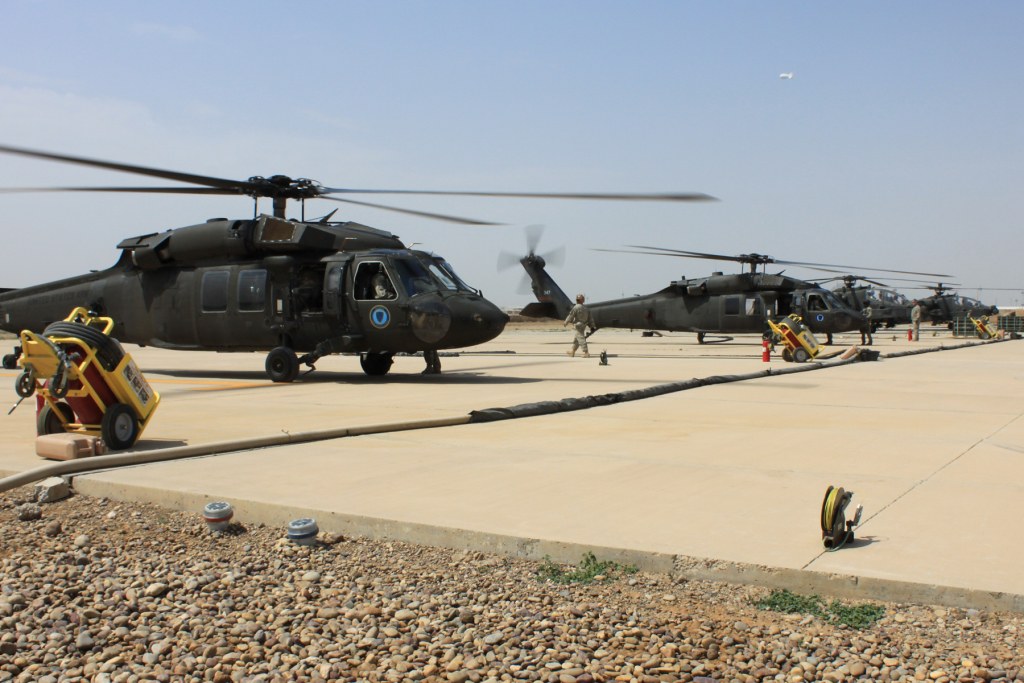
The AH-64 Apache helicopter, an indomitable force on the battlefield, has recently taken flight into the future of warfare. At the core of this evolution is the U.S. Army’s commitment to upgrade the venerable attack helicopter, ensuring it remains the backbone of their rotary-winged fleet. It is set to confront the complexities of modern Multi-Domain Operations (MDO) with a suite of enhancements that promise to redefine helicopter warfare.

Modernization has been a buzzword circulating within defense circles, and nowhere is this more apparent than in the Apache’s transformation. “Fighting and winning on any battlefield, today and tomorrow” is not just a statement; it is a principle guiding the Department of Defense and evidenced in the concerted effort to overhaul the Apache.

In an era where the battlefield is an intricate web of land, air, sea, space, and cyber operations, the Apache’s role becomes even more pivotal. The Modernized Apache, with its increased range and endurance, will dominate this new environment. A new engine, a General Electric Aerospace T901, obtained under the Improved Turbine Engine Program (ITEP) for which Boeing received a contract in 2019, is a testament to this foresight. Offering enhanced fuel efficiency, robust health and usage monitoring, and a significant boost in available power, the T901 ensures the Apache’s might is felt further and for longer durations.

The Modernized Apache will not just travel further but will carry an increased payload of 3,400 – 4,400 lbs., doubling its endurance. The implications of this are clear: a 20% increase in range, the ability to loiter for more effective battlefield coverage, and the capability to bring more firepower to bear.

But it’s not only about brute strength. Interoperability and networking are at the heart of modern warfare, and the Modernized Apache has not overlooked this. The Apache currently is the only U.S. Army platform that conducts integrated Manned-Unmanned Teaming (MUM-T) for both ISR & lethal effects. This technology permits the helicopter to manage and integrate Launched Effects (LEs) on the battlefield, which will only be augmented by additional pylons enabling a greater array of weaponry, including the potential future integration of directed energy weapons.

The Apache’s survivability has also been a focal point of the modernization effort. It includes a Modular Open Systems Architecture (MOSA), which allows rapid insertion of novel technologies and enhanced capabilities. As the latest software version 6.5 (V6.5) flew successfully on October 11, 2023, in Mesa, Ariz., it demonstrated the continuous transformation that the Chief of Staff of the Army espouses. By aligning the entire E-model fleet under the same software, the Army streamlines training and maintenance, enhancing capabilities and the pilot interface, and ensuring parity in sensors and other critical technologies.

While the U.S. Army prepares to trim its UH-60 Black Hawk utility helicopter fleet by roughly 8%, it remains resolutely committed to the AH-64 Apache, with no plans to reduce its numbers, underscoring the attack helicopter’s indispensability and the Army’s anticipation of future threats.

In its upgraded guise, the Modernized Apache represents an intelligent blend of agility, firepower, and adaptability. It stands as the centerpiece of the MDO battlefield, capable of rapid maneuvers and communication, striking at range, and enduring in large-scale combat scenarios. The helicopter’s modernization is a clear signal of the U.S. Army’s vision to maintain dominance in the skies and on the future multi-dimensional battlefield, ensuring that on its last day of service, the Modernized Apache will be more capable and survivable than on its first.
related images you might be interested.








